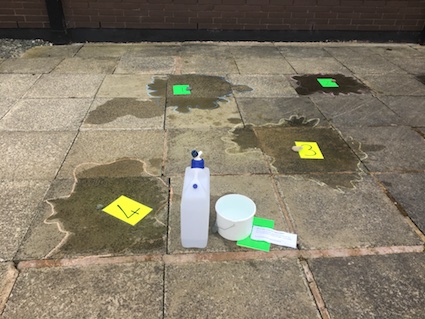
The beauty of undertaking science outside is that an ordinary playful activity can be channelled into an investigation which develops multiple competencies particularly analytic thinking skills. Regardless of the age of a child, creating splashes or splats is appealing. Think too, of the time people spend skimming stones across lakes and other bodies of water.
During one science training day I was running, one group investigated water splashes. Part of the afternoon was spent considering how to generate scientific thinking through questions generated by children. However I did come prepared with a few suggestions and this was one of them:
“Which stone makes the biggest splash? Devise a safe and fair experiment to find out. You have a bucket, stones and a canister of water. Use them wisely.”
I was pleased that a group decided to undertake this challenge. I had given a group of early years practitioners this very challenge during another training day and was curious to see how a group of KS1 and KS2 teachers would perceive and develop this challenge. Very often outside, I find that a question can be explored at any level. Children bring their own knowledge, skills and understanding to a task which a teacher can then help develop and extend.
The group explored this task and in a certain sense the levels of thought and discussion superseded the outcome. For example deciding what needed measuring and how brings a new dimension. Thoughts included:
- Finding out the mass of each stone.
- Deciding the volume of water to be used for each splash.
- Considering whether the displacement of water by the stone will impact the results. A scaled jug would be useful in this instance.
- Agreeing the height at which each stone should be dropped.
- Measuring the size of the splat. The group chalked around each splat and felt that the perimeter could be ascertained using a piece of rope. Another suggestion was to mark a cross and place the bucket here. The longest length from the cross to the furthest edge of each water splat could then be calculated.
From here, a variety of ways of presenting the findings are possible, depending on the age and stage of the class and the curriculum guidelines which are followed. Sometimes it is better to record the findings and then follow up in a separate session, inside or out that involves analysing, interpreting, evaluating and presenting scientific findings.
I would love to know of other ideas that you have found to capture children’s imagination and that work well for science investigations. For me, it was a time when teaching at Achnasheen Primary when the class didn’t understand how hot rocks had to be to melt. We ended up boiling, baking and smashing rocks in our efforts to get them to melt.
This post was originally published in April 2017.





























